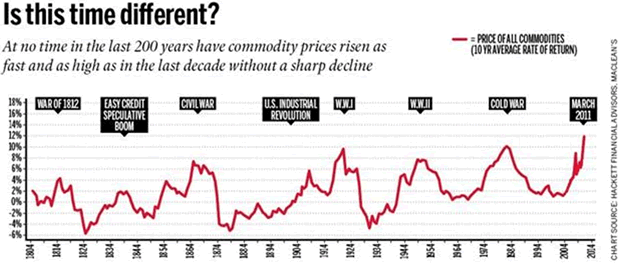Asset allocation finiki the Canadian financial wiki
Post on: 3 Июнь, 2015 No Comment

Asset allocation is an investment strategy that aims to balance risk and reward by apportioning a portfolio’s assets according to an individual’s goals, risk tolerance and investment horizon. [1] The three main asset classes — equities. fixed income. and cash and equivalents — have different levels of risk and return. so each will behave differently (i.e. they are not perfectly correlated) over different periods and market and economic conditions, so diversifying portfolios across asset classes will help to optimize risk-adjusted returns. [2]
There are a number of asset allocation strategies that can be employed by investors. The common ones are strategic asset allocation and tactical asset allocation.
Investopedia explains There is no simple formula that can find the right asset allocation for every individual. However, the consensus among most financial professionals is that asset allocation is one of the most important decisions that investors can make. In other words, your selection of individual securities is secondary to the way you allocate your investment in stocks, bonds, and cash and equivalents, which will be the principal determinants of your investment results. [1]
It is widely agreed that asset allocation accounts for a large part of the variability in the return on a typical investor’s portfolio.
— William F. Sharp, Asset Allocation: Management Style and Performance Measurement. Journal of Portfolio Management, Winter 1992, pp. 7-19 [3]
Contents
Asset allocation strategy
There are a several allocation strategies; the common ones are strategic asset allocation and tactical asset allocation. This article primarily discusses strategic asset allocation, which is described in the following sections.
Strategic asset allocation
A portfolio strategy that involves periodically rebalancing the portfolio in order to maintain a long-term goal for asset allocation. [4]
Tactical asset allocation
An active management portfolio strategy that rebalances the percentage of assets held in various categories in order to take advantage of market pricing anomalies or strong market sectors. [5]
Stay the course: strategic asset allocation
In short, during the next 20 or 30 years, there will be a single, best allocation that in retrospect we will have wished we have owned. The only problem is that we haven’t a clue what that portfolio will be. So, the safest course is to own as many asset classes as you can; that way you can be sure of avoiding the catastrophe of holding a portfolio concentrated in the worst ones.
— William J. Bernstein, The Four Pillars of Investing, pg 244. McGraw Hill
A key reason for devising an asset allocation strategy is to help an investor reduce the risk inherent in volatile equity asset classes that are expected to provide higher returns by combining these asset classes with more stable fixed-income assets. These balanced portfolios help reduce volatility and down-side risk, thus better enabling an investor to maintain a long term investment program (stay the course) without panic selling during bear markets.
For most investors, the hardest part is not figuring out the optimal investment policy; it is staying committed to sound investment policy through bull and bear markets and maintaining what Disraeli called constancy to purpose. Sustaining a long-term focus at market highs or market lows is notoriously difficult. At either market extreme, emotions are strongest when current market action appears most demanding of change and the apparent facts seem most compelling. [6]
Rules of thumb
The following rules of thumb might be helpful as you consider your asset allocation. [note 1]
There is a rule of thumb (age in bonds ) that says subtract your age from 100, where 100 is expected longevity, in order to obtain an equity/bond asset mix. As you age your reliance on your investments will likely increase and thus it is expected that your focus adjusts less towards growth (and its inherent variability) and more towards stability (and its inherent preservation of capital). A 20-year old would have an equity/fixed income asset mix of 100 — 20 = 80 or 80/20. A 60-year old would have an equity/fixed income asset mix of 100 — 60 = 40 or 40/60. This concept is best graphically represented by a human capital graph: [note 2]
Asset Allocation over Time
When you are 20, you have little financial wealth but an entire earning lifetime ahead of you. You can afford to have an aggressive asset allocation. You may not have the stomach for an aggressive allocation which is where tolerance for risk questionnaires come into play. As you age, your financial wealth increases but your earning lifetime decreases and your asset allocation becomes more conservative. Even if the tolerance for risk questionnaire says that you can take an aggressive asset allocation, you shouldn’t. You need to protect your assets because you have no way of replacing them.
As with everything, there are always exceptions. If you have an indexed, defined benefit pension plan that appears secure and that covers your living expenses, then you can afford to take as much or more risk than your risk questionnaire says you can. Understand, though, that everyone’s perceived tolerance for risk is far greater than one’s actual tolerance for risk. It takes a severe market downturn to prove this point. Bull markets tend to increase the risk profile of a portfolio because one is loathe to reduce an overweight position because it’s obviously going to continue to increase in value. Again, it takes a severe market downturn to demonstrate that a tree cannot grow to the sky. If you don’t need to take the risk, why do so.
All age-based guidelines are predicated on the assumption that an individual’s circumstances mirror the general population’s. Individuals with different retirement ages (earlier or later), asset levels, or needs for the money (e.g. saving for a goal other than retirement) would be well-advised to consider what circumstances make their situation different and adjust their asset allocation accordingly.
Benjamin Graham, in The Intelligent Investor, suggests the following policy:
We have suggested as a fundamental guiding rule that the investor should never have less than 25% or more than 75% of his funds in common stocks, with a consequent inverse range of between 75% and 25% in bonds. There is an implication here that the standard division should be an equal one, or 50-50, between the two major investment mediums. [7]
Another common rule of thumb for a balanced portfolio is a 60-40 split between equities and bonds.
Ability, willingness, and need

Author Larry Swedroe has written a multi-part guide for selecting your asset allocation; how much to invest in stocks versus bonds. [note 3]
- An investor’s ability to take risk is determined by four factors: [8]
- Investment horizon — when do you need the money?
- Stability of your earned income
- The need for liquidity — if you need the money in a hurry
- Options that can be exercised should your existing plan fail to meet your objectives
- Define your willingness to take risk. [9] Do you have the fortitude and discipline to stick with your predetermined investment strategy when the going gets rough?
- The need to take risk is determined by the rate of return required to achieve financial objectives. [10] The greater the rate of return needed to achieve one’s financial objective, the more risks with equities one needs to take. A critical part of the process is differentiating between real needs and desires.
- How you should handle difficult choices among ability. willingness. and need to take risk. [11]
Domestic vs foreign asset classes
Once the fixed income:equity split has been decided, a second important – but difficult to answer – question is how much to allocate to foreign (or “global”), as opposed to domestic, asset classes. Canada represents a very small portion of world stocks and bonds and some writers have suggested that based on financial theory, Canadians should therefore have very low allocations to domestic asset classes. In practice, most Canadian investors have much larger allocations to domestic asset classes, ranging up to 100%. This is known as the home country bias, and can be justified by a number of arguments. For fixed income, most investors will in fact opt to keep it all domestic. For equities however, there are convincing arguments for global diversification, including reduced volatilities, and avoiding sector concentration/under-representations in the domestic market, as well as avoiding issuer concentration in the domestic market.
Rebalancing
Over time your asset allocation may change from it’s original position as a result of the difference in returns from the various asset classes. Rebalancing is the act of bringing the asset allocation in line with your investment policy statement. A typical recommendation is you should review your asset allocation once a year and if necessary rebalance as specified in your investment policy. Rebalancing is often the most difficult part because it is counterintuitive, it requires you to sell a portion of an investment that went up, and buy more of what went down. [12]
Notes
- ↑ Rule of thumb: A principle with broad application that is not intended to be strictly accurate or reliable for every situation. ↑ Human capital is the measure of an employee’s skill set. See:Human Capital. on Investopedia. It can also be defined as the present value of the anticipated earnings over one’s remaining lifetime (Ibbotson et al. 2007, Lifetime Financial Advice: Human Capital, Asset Allocation, and Insurance. Research Foundation of CFA Institute, page 1) ↑ There are additional articles in the series:
Determine the appropriate mix between domestic and international stocks. (This article is US focused.)
Decide how much to invest between value and growth stocks. (This article is intended for experienced investors who wish to deviate from the total market approach.)
Decide how much to invest between small-cap and large-cap stocks. (This article is intended for experienced investors who wish to deviate from the total market approach.)














